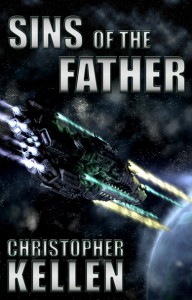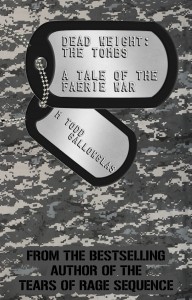(This post originally appeared at Anne Allen’s blog at: http://annerallen.blogspot.com/2011/04/ready-to-be-wrublisher-priter-some.html)
These are chaotic and exciting times in the writing game, but it’s important to remember self-publishing means you’re not only the writer, you also need to wear an entirely different set of hats.
My first three novels, a series of apocalyptic thrillers known as the Plague Year trilogy, were published by Ace/Penguin Group USA. They did a nice job not only with the cover art but in packaging all three novels with a “look.” They edited and typeset the books and handled the conversions to ebooks on all platforms. Heck, they also bought display space in the major chains, placed ads in genre and trade magazines, ran specials on the Penguin web site and generally did a bang-up job.
Did I come anywhere near the New York Times lists? No, sir. Did I exceed the expectations of everyone involved (except me!) from Penguin itself to some critics to booksellers? Absolutely.
Plague Year is currently in its seventh printing in North America and, in Spain, became a hardcover bestseller due in part to my Spanish publisher’s enthusiasm not just for the book but for the treatment it received in the U.S. Like it or not, New York still leads the way in the corporate world. Other countries such as Germany, Russia and the Czech Republic have also fallen in line with their own excellent campaigns. Of course I take most of the credit – I wrote the books – but it can’t be argued that a fair level of support from Penguin helped convince some minds overseas.
Why am I bragging? Because I’ve begun to self-publish on Kindle and elsewhere myself, and: it’s harder than I was promised by the e-revolutionaries!
Ha ha. There are hurdles I hadn’t anticipated. Identifying and solving those issues has become my own personal revolution.
Anne spoke eloquently on quality writing and professionalism, so all I’ll add to those ideas is the old truth that most of us average 1,000,000 words of garbage before we learn enough craft to write superior characters, dialogue and plotlines. That learning curve hasn’t changed.
In today’s world, especially on the ’Net and with all e-things, we expect instant gratification. Everyone hopes to skyrocket onto the charts. Personally, I want a zillion love slaves to FaceBook me and then gather on Skype to sing pirate shanties about my greatness.
What’s stopping them?
Cover art
People do judge a book by its cover.
One thing I’m not is a graphic designer. When I geared up to republish my short stories in mini-collections on Kindle and Nook, I wanted to spend as little money as possible.
99 cents is the lowest price on which Kindle and Nook will pay royalties. I didn’t see any point in selling my collections at 75 cents if Kindle and Nook pocketed 100% — and below the $2.99 price point, Kindle pays only a 35% royalty, not the vaunted 70% you tend to hear, so I calculated how many copies I’d need to sell to break even.
The best artists command as much as $400 per cover.
People like to say ebooks are forever (i.e., you and your descendants will earn royalties until the sentient raccoons take over the world in 6400 A.D. and place humankind in chains), but I really didn’t believe I’d sell 1143 copies before the raccoon apocalypse. The average ebook sells, uh, nothing? More on that in a minute.
I went cheap with the covers. Was that a mistake? Yes and no. Go ahead, take a peek. They’re not great. But there are years of evidence to support the idea that short story collections sell poorly compared to novels, so that’s an additional factor.
Are those covers holding potential readers back? Or is the material not generating word-of-mouth? All of these stories were professionally published, btw, most of them in top anthologies and magazines. I like to think that means they’re good stuff, and yet three of my e-collections have yet to pay for their inexpensive covers.
Here’s where I’m wrestling with conflicting data:
My fourth ebook is a stand-alone novella called “The Frozen Sky.” It’s sold 8500 copies since January. That’s not a staggering number, but it’s enough to meet my wife’s car payment and most of our utilities. What’s interesting is the simple, stark, ominous cover was designed at zero cost by a superfan who gained permission from NASA to use a photo taken by the Cassini probe.
What I’m learning is that ebook cover art shouldn’t be busy, and, in fact, can be very basic, but it still needs to have a “look.” Finding someone who can deliver that look is the whole battle. If you’re not an artist, don’t kid yourself. Hire the best. My feeling now is that going halfway is wasted time and income.
Upfront Expenses
“The money flows to the author.” This maxim is a venerable standby in writing, but it’s changing.
If you’re self-publishing and you don’t know PhotoShop (or want something more spectacular), need editing, and need your work converted into e-formats, it’s easy to burn through several hundred dollars in a hurry.
Referral lists aren’t always reliable, either. It’s also maddening to wait for the hired help to get organized when the whole point of self-publishing is to make your book public now, not next month.
Depending on your free time, it might pay off in the long run to teach yourself all of the above. Me, I’d rather be writing, so I’ve learned to plan ahead. I try to get each ball rolling before I need it. This can be a lot like herding cats.
I’m no longer just a writer, I’m a “wrublisher.” (A “priter”?)
My advice is to ask around for personal recommendations. Once you find a service provider who’s reliable and affordable, love them.
You want a product that will to wow people, not a book that’s half-baked.
The Race to the Bottom
Right now there are 900,000 ebooks on Kindle.
500 of ’em are selling great; 1,500 more are selling well; the next 10,000 are doing all right; another 20,000 sell a steady trickle; and the other 868,000 are selling zipperooni, maybe 15 copies total to Aunt Mavis and the author’s buddy Steve. That’s right. The vast majority of these writers are exactly where they’d be if they were banging at the gates of the evil elitist gatekeeping gatekeepers — on the outside.
I don’t like being a big fat negative-nancy, but the idea that we’re all going to upload our Great American Novels and sell sell sell is crazy, crazy, crazy.
It’s a swamp. Buyers are bees. They find the flowers and swarm.
What this has done is create enormous pressure on writers to undervalue their work or give it away free.
Even then, most of the time, nobody’s buying. What can you do? Writers control what they’ve always controlled: their stories. Keep at it. Do the work. Patience and persistence will always be the names of the game.
Most successful first novels are not that writer’s first novel at all. I know nobody wants to hear it, but few of us are gifted enough to write a well-crafted book with our first effort. If you’d told me when I was seventeen that my derivative Stephen King rip-offs weren’t good enough, I would have argued heatedly that you were a nincompoop. But it was true. Plague Year was my third-and-a-half novel, and that’s a very, very normal trajectory.
Remember why you got into this crazy business in the first place. Presumably it was for the love of language and storytelling.
Good writing is hard. E-publishing has subverted some of the rules, but the difficulty of finding commercial success isn’t something I predict will change. There are no shortcuts. So do the work. You’ll get there, but it may be a long haul. That’s just my pragmatic advice.
E-Revolution Now!
Having said all of that, there are break-out exceptions every week. If you think you’re ready, take your shot. The best part about ebooks is you can fix, expand or completely rewrite ’em at will, then post new versions in a matter of days instead of haggling with the corporate machine for three years to fix one freaking typo.
If there’s a negative reaction to your book (or if there’s no reaction at all), you can remove it and improve it – and if people love it, you’ve already arrived.





